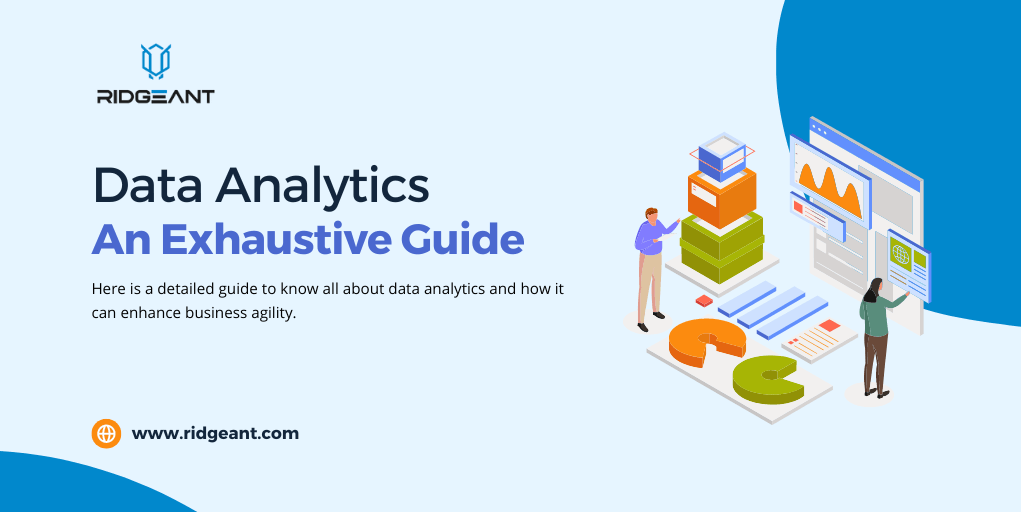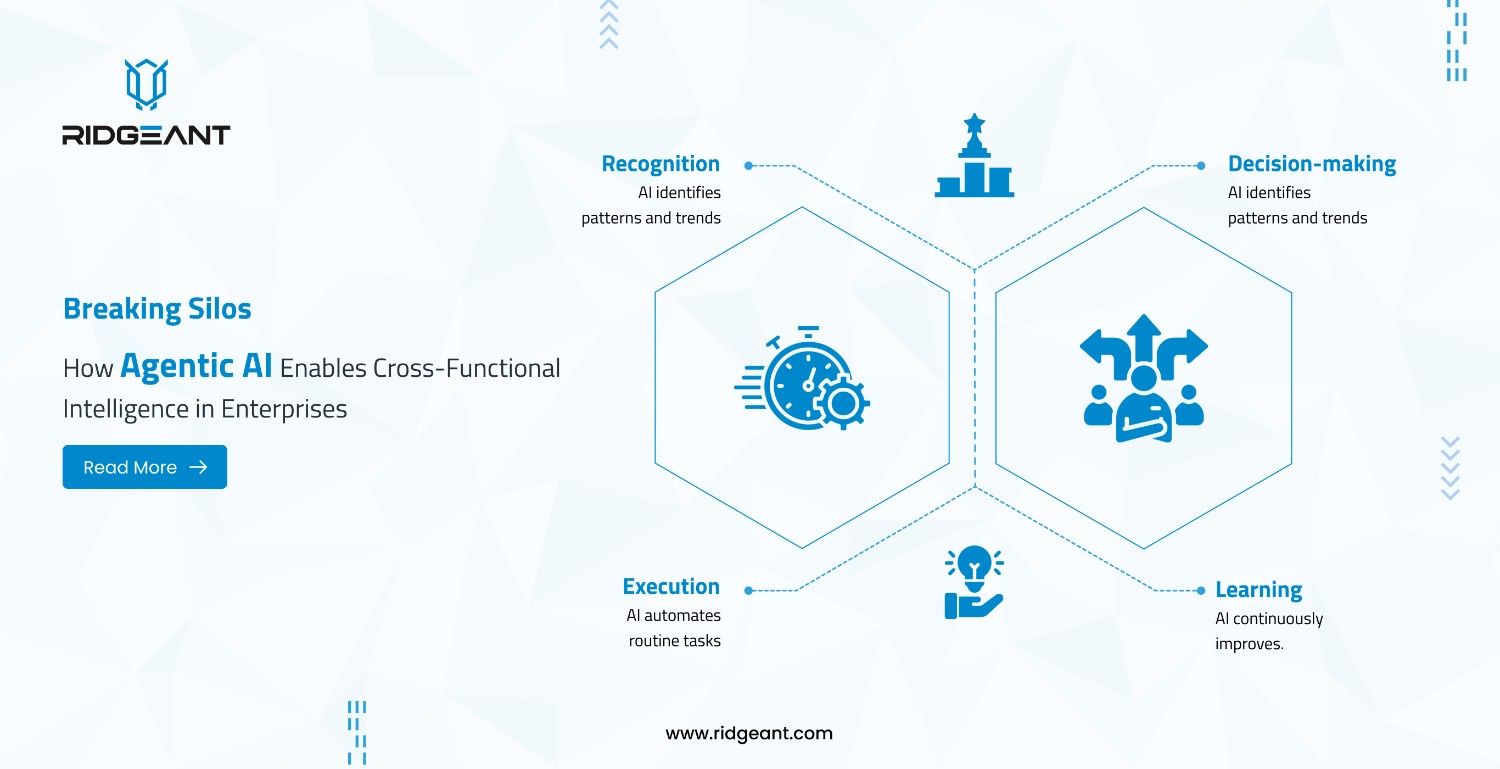
“Information is the oil of the 21st century, and analytics is the combustion engine.” – Peter Sondergaard
All around the globe, almost all organizations are loaded with data of different kinds, in its raw form. But the crux lies in extracting valuable information out of it. This is where data analytics comes in. With digitization becoming the new normal and data generation going on the rise, data analytics has found high significance in assisting businesses take insightful decisions.
Data analytics is a world of its own, that focuses not only on deriving intuitive information from the past but also looks at futuristic predictions to optimize business processes and achieve organizational goals.
Data analytics is often contrasted with data analysis. They are similar terms but still, have their own individualistic characteristics. Data analysis is more like a subset of data analytics since data analytics also includes other important processes like data engineering and data science.
This exhaustive guide talks about the fundamental concept of data analytics and its further intricacies that can help you understand the technology better. This handbook covers the following subtopics:
- What is Data Analytics?
- Key Benefits of Data Analytics
- Major Challenges Faced in Data Analytics
- Different Types of Data Analytics
- Key Skills Needed to Become a Data Analyst
- Different Techniques Used for Data Analytics
- Major Steps Involved in Data Analytics
What is Data Analytics?
Data analytics is a process in which raw data is analyzed computationally to extract meaningful and actionable insights, for better business decisions. As a multi-disciplinary area, it consists of a range of analytical techniques that include statistics, math, and computer science.
As an integral part of the entire business intelligence process, it includes data collection, data preparation, and applying data analytic techniques for gaining insights like trends, patterns, inconsistencies, etc. This can be done through processes like data modeling or data visualization. Data analytics, being a complex process, is usually performed by data analysts and data scientists by mining the raw data and seeking competitive benefits from it.
Data analytics helps organizations in understanding their customers, and industry segments and prepare themselves better for the future. It plays an important role in enhancing the overall efficacy of the organization by responding quickly to innovative market trends and patterns. It can be leveraged for budgeting and forecasting, risk management, marketing and sales, product development, research, and development.
Key Benefits of Data Analytics
- Better and personalized understanding of customer requirements, demographics, survey responses, future opportunities, etc.
- Tracking progress with KPIs, identifying gray areas, and streamlining business workflow
- Take advantage of current trends and update business processes accordingly
- Effective digital marketing with the identification of better business prospects
- Maximize profitability by adjusting pricing strategies based on market trends
- Enhanced decision-making based on statistics and proven facts rather than judgments
- High-quality security and governance lead to better confidentiality and control
- Easy sharing of information within departments and other organizations
- Risk mitigation and easy management of setbacks, with an appropriate backup plan
- Focussed and targeted promotions for increased business avenues and marketing results
Major Challenges Faced in Data Analytics
Since the data bulk is heavy all around, there are certain challenges that can come along the way. Here are they:
- Shortage of trained professionals – It is important but difficult to get hold of worthy professionals who have a grasp of data analytics and relevant technologies. This could pose a problem since this is a constantly evolving field.
- Unstructured and varied data – With data increasing by leaps and bounds, the type of data that is being collected is of different nature and hence collating that together becomes difficult.
- The learning curve for visualization tools – Data analysts may take time and training to learn emerging data visualizing tools since that is the route to viewing their data bulk in the right way.
Different Types of Data Analytics
Based on the different areas of analysis and its goals for data-driven decisions, here are the types of data analytics:
- Descriptive Analytics – What happened? A simple analysis that peeps into what has happened in the past. This can be done with data aggregation and data mining. It is more like deciding and defining the ‘what’.
- Predictive Analytics – What will happen? A futuristic view of what could happen in the future. Data analysts offer insightful information that could predict the future with historical data and probability theory.
- Prescriptive Analytics – How to act? Detailed steps on what action and decisions should be taken based on predictive results. It is a complicated process involving machine learning, algorithms, and computational models.
- Diagnostic Analytics – Why it happened? It looks at the ‘why’ and finds out the abnormalities in the data. It can be done through different techniques like regression analysis, probability, filtering, and time-series data analytics.
Key Skills Needed to Become a Data Analyst
Becoming a data analyst is one of the trending career options today. Here are some of the major skills that must be present, for becoming a good data analyst:
- Mathematical, analytical, and statistical ability
- Knowledge of the latest statistical programming languages, frameworks, databases
- Problem-solving and communication skills
- Machine learning algorithms
- Probability and statistics
- Data management and visualization
Different Techniques Used for Data Analytics
To perform in-depth data analytics, data analysts must gain proficiency in different tools and techniques as below:
- Regression Analysis
This statistical technique is used to evaluate the relationship between two or more independent variables. It helps you foresee the effects of the independent variable on the dependent one.
- Factor Analysis
This method helps uncover variables that affect customer behavior and other choices. It is used to reduce many variables into fewer numbers of factors. It identifies the underlying structure of a set of variables.
- Cohort Analysis
It is a technique with behavioral analytics in which analysis is done on the usage patterns of a group of users, based on their shared traits for better tracking of their actions. The customer data is divided into more manageable chunks.
- Cluster Analysis
It involves the process of clustering a set of objects so that they are more similar to one another than to objects in other clusters. It helps you in watching the way data is distributed across different datasets.
- Time-series Analysis
This analysis technique is a specified method to analyze a sequence of data points that are collected over an interval of time. It helps in identifying trends and patterns for better future forecasting.
Major Steps Involved in Data Analytics
Data analytics is a superset of data-related activities that together, encompass the entire process. Here are the different steps that are involved in data analytics:
- Data Collection
This is the base foundation of the entire data analytics process, wherein data is collected by various means from different sources. The means could be using Big Data tools, web scraping, databases, etc. The data collected could be structured and unstructured since any of them could be relevant in providing useful information.
- Data Processing
Processing of data involves maintaining and managing the quality of the bulk of data that is collected. This could include all types of data and maintaining the quality of unstructured data is highly important. There could be the usage of different transformation techniques to handle the discrepancies and offer even data distribution.
- Data Analysis
Once the data is collected and processed, it is fit for analysis. Detailed data analysis is carried out for understanding the trends and patterns, with the help of innovative tools and data models. It also includes data visualizations to have a visual interpretation of data with its inherent features and characteristics.
- Data Interpretation
Now that the data is analyzed, here comes the phase wherein data is reviewed via pre-determined procedures to come to a consensus. This helps data analysts in perceiving the significance of data through visually appealing dashboards and reports. It highlights the hidden patterns and trends that can be of great help to businesses.
As We Wrap Up
This comprehensive data analytics guide attempts to encompass all facets of data analytics, offering a total view of the processes involved. Data analytics has been an integral part of today’s organizational workflow, unveiling the key metrics that are hidden under the huge bulk of data. It has been a great career prospect too, for many data analysts and data scientists.
As a leading data science company enabling companies to establish data-driven growth paths, Ridgeant offers exemplary data analytics services that can help you capitalize on your data assets to build a data-driven roadmap to growth.
To improve performance and spur growth, you may become a data-driven organization with the aid of our expert data analytics consulting. We offer data visualization services, BI modernization services, BI implementation support, data mining, self-service BI and a range of managed services.
Let’s connect and talk about your data analytical requirements and we will be happy to help!














